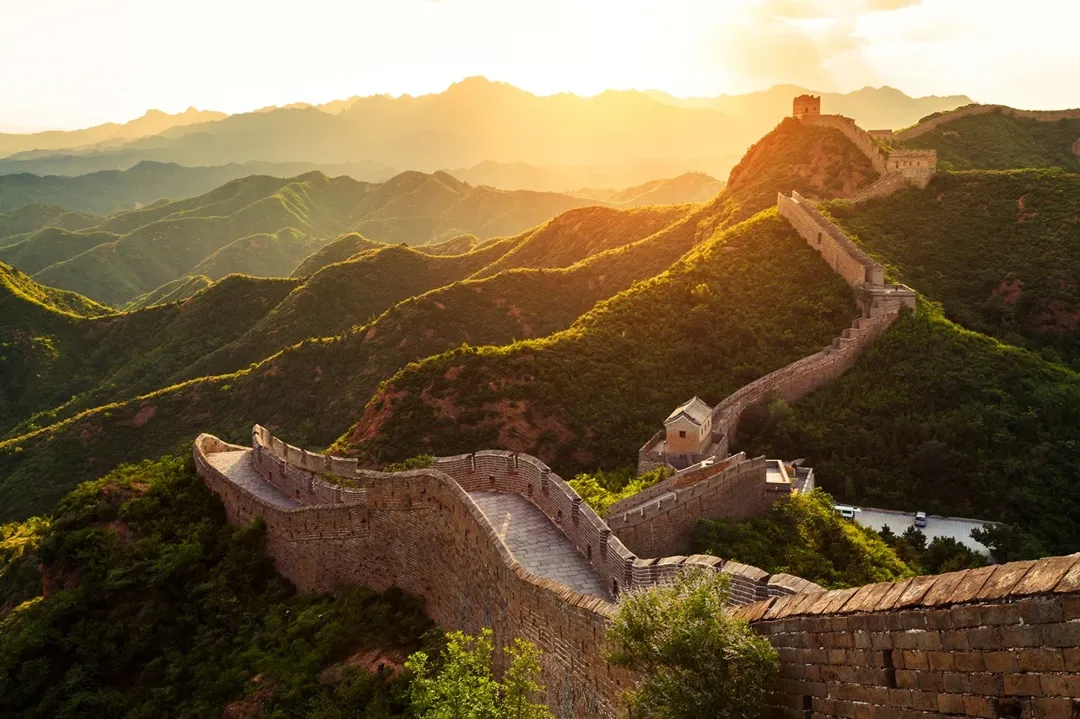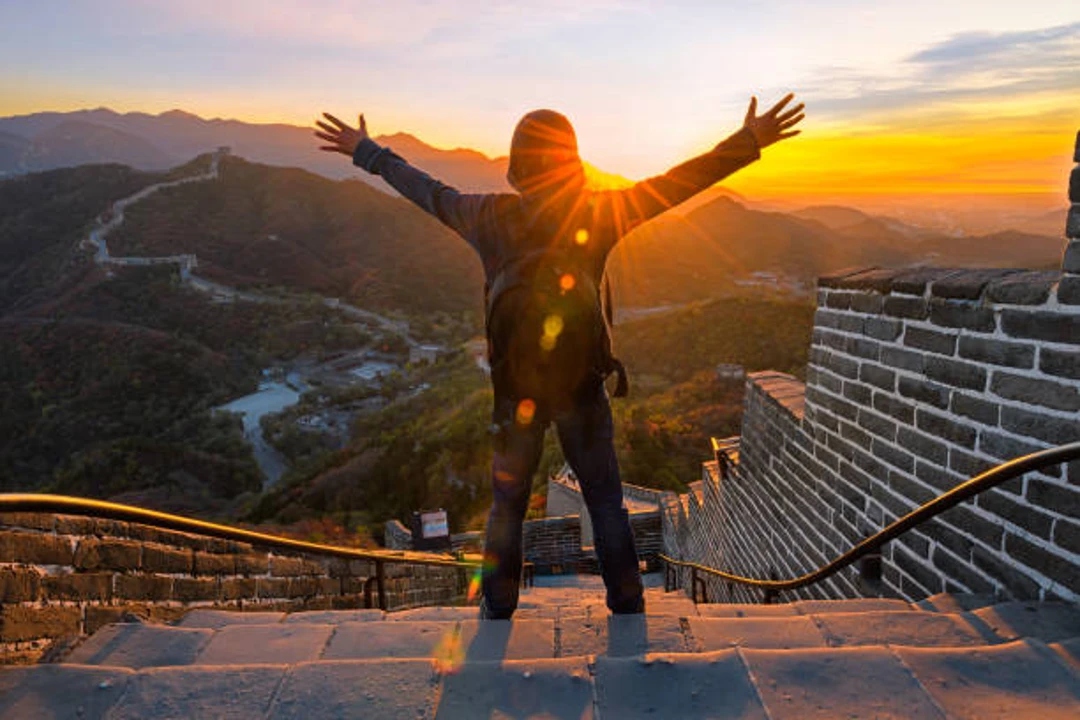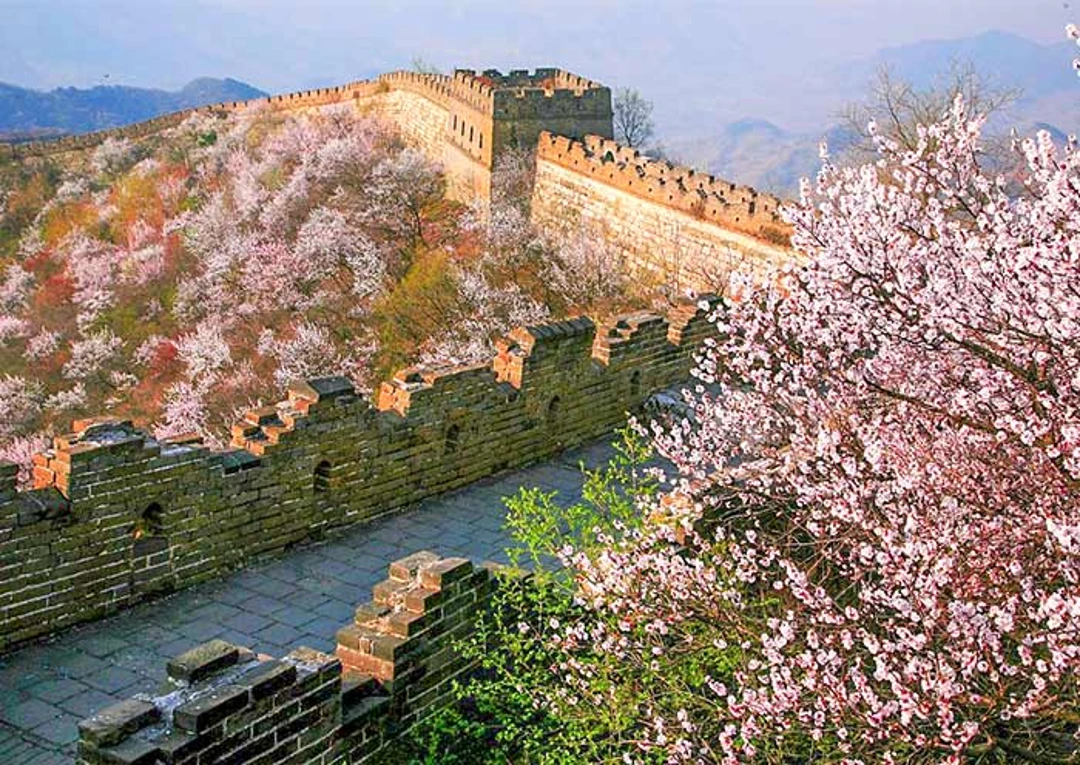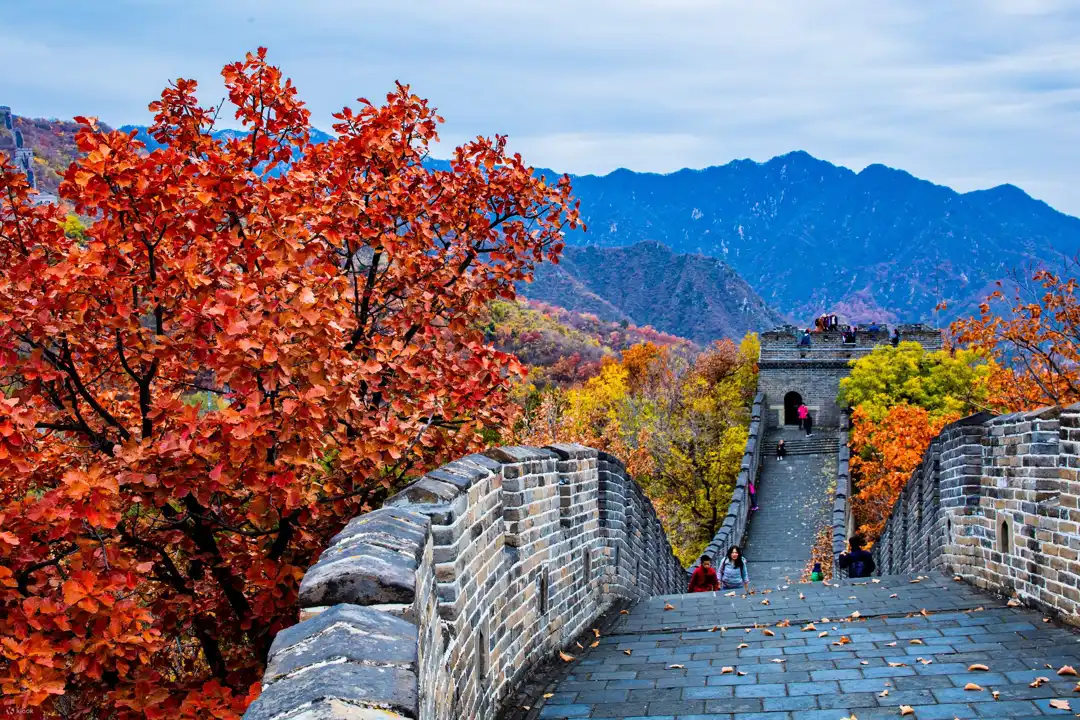Walking the entire Great Wall is so daunting that visitors would be forgiven for asking “How long does it take to walk the Great Wall, anyway?”
However, even if you don’t walk the entire wall, visiting some of the most iconic parts is a must for any intrepid traveler.
In this post, I want to get into the nuts and bolts of how long it actually takes to walk the various sections of the Wall and show you step by step what it’s like to walk the historic structure.

Understanding the Length of the Great Wall
Ever wonder how long the Great Wall of China is? At over 21,000 kilometers (13,000 miles), it seems like one giant stone dragon zigzagging in and out of the mountains and plains.
But it was not all constructed in one go! Each dynasty built new sections, making it a fascinating mosaic of history and buildings.

But even though it’s 13,171 miles long and stood for centuries, you cannot walk all of it today. Some stretches are completely dilapidated and surrendered to the elements. But many sections are restored and easy to access.
It’s simply awe-inspiring to walk back into history and be in a place that’s over 2.5 millennia old. Whether you hike for a few hours or for many days, you must visit the Great Wall!
Walking the Entire Great Wall: Is It Possible?
For many an adventure traveler, walking the entire Great Wall of China is a dream. But is it really feasible? Technically, sure, but in practice, it’s an insane feat that very few people have ever tried.
The Great Wall itself stretches over 21,000 kilometers (13,000 miles). It crosses the desert, mountains, and rough landscapes, and, if you were able to walk 30 km (18 miles) per day, it would take at least 18 months to 2 years to walk the wall if all conditions were perfect and there were no setbacks.

However, several factors make this nearly impossible:
Destroyed and Inaccessible Sections - Many sections of the wall have collapsed while others lay buried beneath sand and new broom shrubs, making them impossible to walk.
Extreme Terrain - Some parts include navigating steep mountains and are more challenging.
Restricted Areas - Some sections of the Wall also traverse military or privately owned land, so it’s technically off-limits.
Weather Challenges - Additionally, harsh winters and scorching summers, as well as unpredictable and sudden storms, can make long-distance trekking in the mountains difficult.
Despite the adversity, a few intrepid travelers have set out on this epic adventure. Back in 1984, British explorer William Lindesay was one of the earliest Westerners to take on a walking expedition along the Wall.

Since that time, only a handful of people have hiked large portions of the Wall. Walking it is feasible but not easy!
For the average visitor, the highlights of the wall are its well-restored sections, which allow you to enjoy the history and magnificence of the wall without suffering through a multiday ordeal.
Popular Sections and How Long They Take to Walk
As it’s impossible for the average traveler to walk the entire wall, the best way to see the Great Wall of China is to visit some of the most iconic and well-preserved sections.
Here’s a look at some of the most famous areas and how long it takes to walk between them:
1. Badaling – Most Touristy & Easy Walk
Badaling is the Great Wall’s most popular and well-preserved section. The path is wide and has been thoroughly restored, with metal handrails and guardrails making it one of the simplest stretches to walk.
It’s two to three hours to explore, depending on how much or how little you want to see.
This area is perfect for families, first-timers, and anyone seeking a convenient but classic experience.

2. Mutianyu – Scenic & Family-Friendly
It is one of the best-preserved sections and gets fewer tourists than Badaling. Plus, the wall here is set against a beautiful natural backdrop.
The hike here usually takes 2-4 hours, with gentle uphill sections and stairs.
There’s also the option to ride a cable car up and a toboggan down, so this is an easy and fun visit for travelers of any age.
3. Jinshanling to Simatai – A Hiker’s Favorite
This is hikers’ heaven, with a blend of restored and wild landscapes and some jaw-dropping views across the rolling hills.
It takes 4-6 hours to trek from Jinshanling to Simatai, with medium-to-hard level ascents.
This is the section of the trip for anyone who wants a mix of adventure and old-world charm.

4. Jiankou – Wild & Challenging
A difficult but exciting stretch of the Wall to hike is the Jiankou section, featuring some very steep climbs and unrepaired pathways.
This section requires a full-day’s hike, and it is not recommended for inexperienced hikers.
While the stunning and unspoiled vistas are worth the work, be sure to be careful.
5. Gubeikou – Remote & Historical
For those that want to get away from the beaten path, Gubeikou is a quiet, local-feeling slice of the Wall.
It’ll take you 5-6 hours to hike this almost entirely unrestored wall, but it’s perfect for history enthusiasts and intrepid travelers looking for a deeper experience.

Factors That Affect Walking Time
1. Fitness level
This really depends on how quickly you walk — and how fit you are. Some sections are easier than others, but some are brutal.
If you’re not a hiker, and if you haven’t done any serious climbs, it’s going to take you awhile to reach your end goal.
2. Weather conditions
The weather is a huge factor as well. The summer months experience blazing heat, while winter months can get cold (and see snow).The spring and fall are the best with mild temps and great scenery.
Time your trip around the weather to have a more enjoyable hike.

3. Wall conditions
Next, take into account the Wall itself. The reconstructed parts, such as Badaling, are even asphalted and simple walkways.
The wilder sections, such as Jiankou, are not maintained and are more rough and rugged.
Understanding the terrain can help you better understand which section will work best for you and your sense of adventure.
Tips for Walking the Great Wall
1. Bring Essentials
Plenty of water - There aren’t many vendors on the Wall, so it is important to bring water with you.
Snacks or energy bars - Some sections involve hours of hiking without food stands.
A small backpack - To hold just what you need, without the unnecessary weight.
A portable charger - Helpful so you can keep your phone charged for maps and pictures.
2. Plan Your Route & Transport
Some sections are easier to reach, such as Badaling and Mutianyu (from Beijing).
More remote sections, including Jinshanling and Gubeikou, will take a bit more effort and time to get to, either via private vehicle or a tour.
If you’re planning on hiking part of a section, be sure to organize transportation back to your starting point.

3. Prepare for Physical Demands
Some areas have several thousand steep steps, so you should at least be in decent shape. If you don’t walk a lot, you’ll want to begin at one of the easier sections, such as Badaling or Mutianyu.
Stop and rest when you want to. There’s no pressure!
4. Wear the Right Gear
Hiking shoes with a good tread are a must (there are rocky/steep sections). Dress in layers for varying temperatures. Wear a hat, sunglasses, and sunscreen — the sun is strong!

FAQ

1. When’s the ideal time to see the Great Wall?
The ideal time to visit is in the spring (April–May) or the fall (September–November), when the weather is cooler and the crowds thinner.
2. Can I hike the Great Wall safely?
Yes, the Great Wall is safe for hiking but watch for loose rocks and slippery stone on the less restored sections.
3. Is there food and any areas to rest on the Great Wall?
You’ll find a few food stalls and rest stops at the most visited spots, such as Badaling, but if you’re planning on a longer hike, supplies are a good idea.
Conclusion
Trekking the Great Wall of China is a once-in-a-lifetime experience that combines history, adventure, and stunning landscapes.
Though it can be challenging to hike the entire thing, even seeing a few stretches of the most well-known sections (Badaling, Mutianyu, as well as Jinshanling and Jiankou) is a great way to experience this marvel.
So tie those hiking boots and prepare to take a journey through one of the planet’s best wonders!
